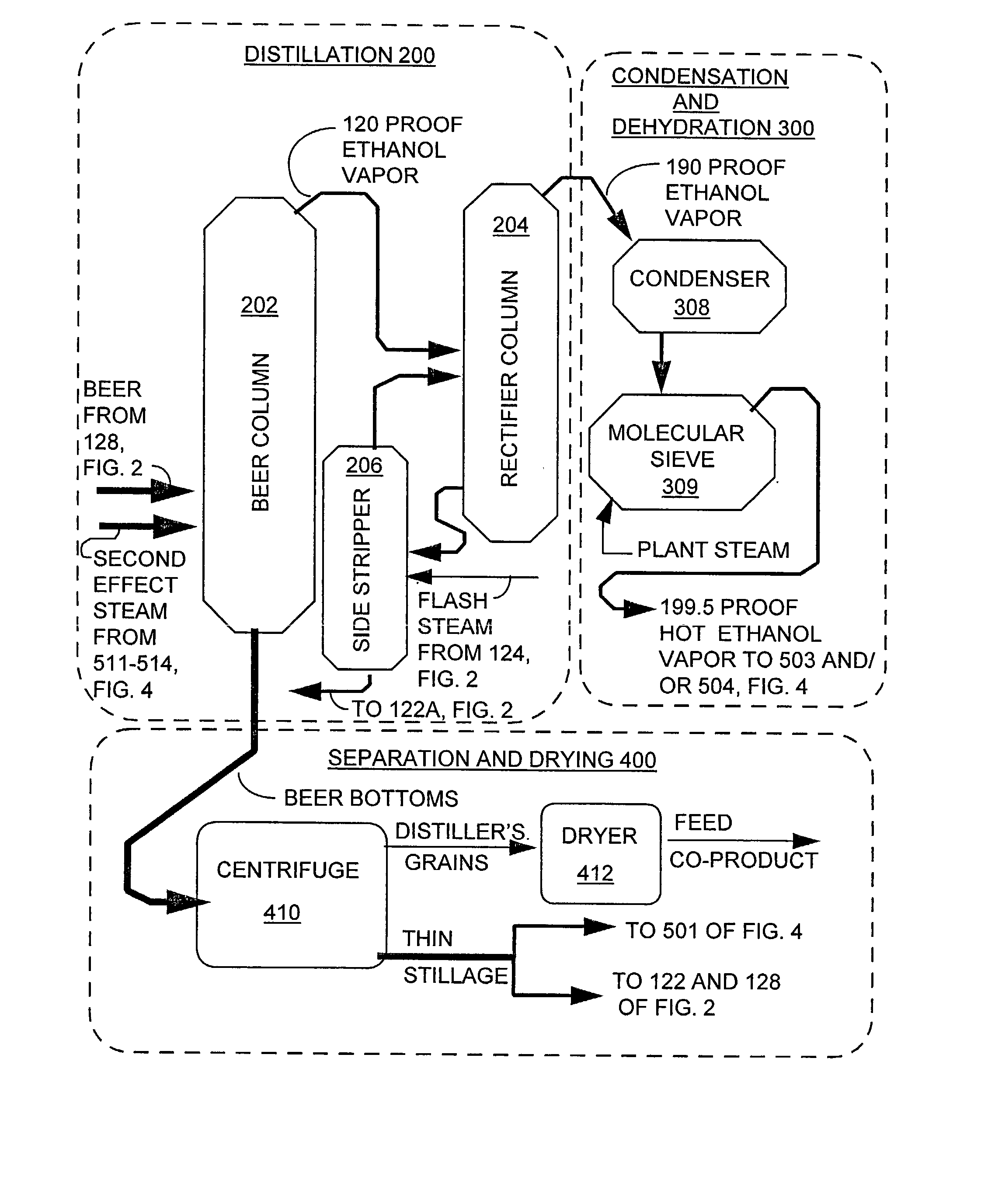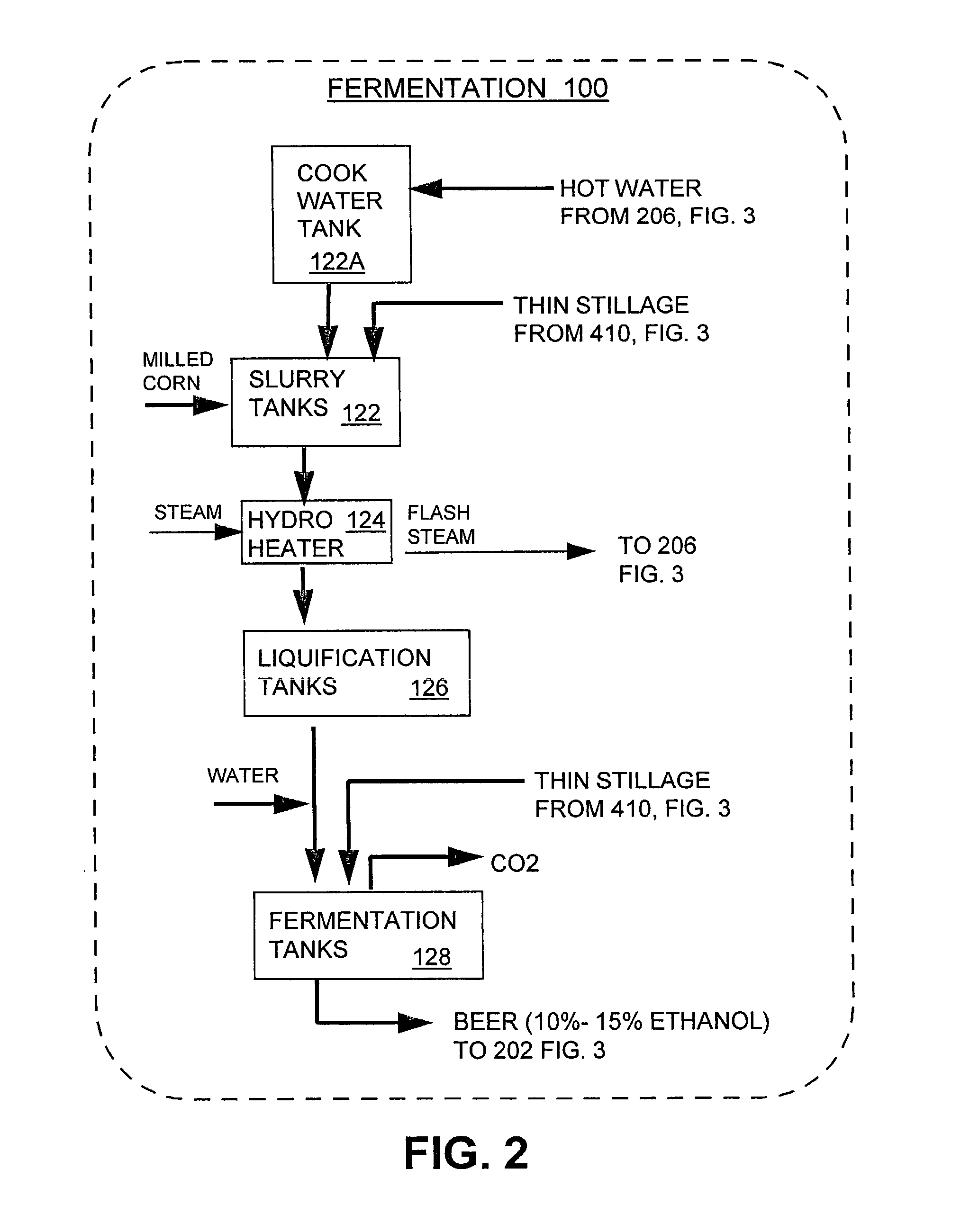Ethanol distillation process
a technology of distillation process and ethanol, which is applied in the direction of vacuum distillation separation, separation process, application, etc., can solve the problems of more difficult economic constraints for a fuel grade ethanol producer than for a distiller, and achieve the effects of less time, less heat, and reduced tim
- Summary
- Abstract
- Description
- Claims
- Application Information
AI Technical Summary
Benefits of technology
Problems solved by technology
Method used
Image
Examples
Embodiment Construction
[0022]FIG. 1 provides an overview of the invention ethanol distillation process arrangement 10. As illustrated in FIG. 1, the invention ethanol distillation arrangement 10 includes a fermentation portion 100, a distillation and dehydration portion 200, a condensation and dehydration portion 300, a separation and drying portion 400 and an evaporation portion 500.
[0023]As shown in FIG. 2, fermentation portion 100 includes slurry tanks 122 where hot water and milled corn are mixed, a cook water tank 122A that provides hot water to slurry tanks 122, a hydro-heater 124 where the slurry from slurry tanks 122 is heated under pressure, liquification tanks 126 where the resulting mixture is further processed prior to fermentation and finally fermentation tanks 128 where the mixture is fermented to produce an ethanol mixture known to those skilled in the art as “beer”.
[0024]Distillation portion 200 shown in FIG. 3, includes a beer column 202, a rectifier column 204 and a side stripper column ...
PUM
 Login to View More
Login to View More Abstract
Description
Claims
Application Information
 Login to View More
Login to View More - R&D
- Intellectual Property
- Life Sciences
- Materials
- Tech Scout
- Unparalleled Data Quality
- Higher Quality Content
- 60% Fewer Hallucinations
Browse by: Latest US Patents, China's latest patents, Technical Efficacy Thesaurus, Application Domain, Technology Topic, Popular Technical Reports.
© 2025 PatSnap. All rights reserved.Legal|Privacy policy|Modern Slavery Act Transparency Statement|Sitemap|About US| Contact US: help@patsnap.com



